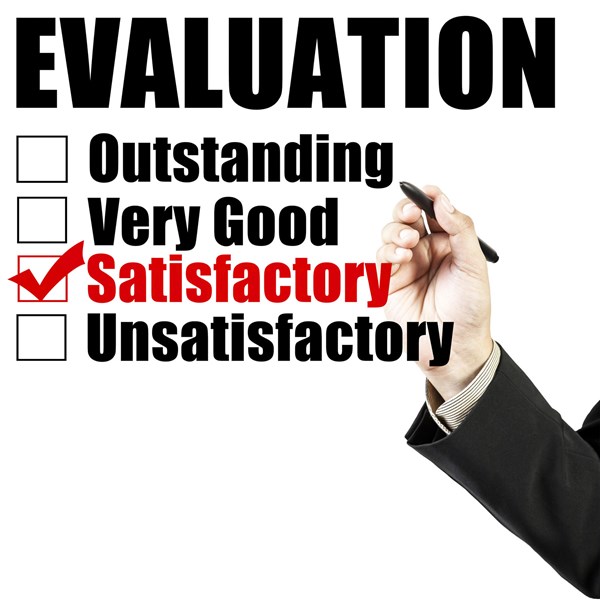
If there is one thing that most business owners, managers and staff can agree upon, it is that they all hate performance reviews. Everyone becomes apprehensive because performance reviews have come to be associated with delivering or receiving bad news. A typical scenario usually involves a last-minute scrambling to think of comments about the staff member, and often what is remembered are recent negative incidents, so the employee learns to expect a negative review. The only discussion to address performance issues is a quick phrase like “try harder” or “be a team player.” Conversations about career goals never happen. Finally, the subject of the annual raise comes up, which means an arbitrary dollar amount is given annually, and nothing is tied into actual performance or behavior.
By the end of the review process, nobody knows what has been accomplished, except that the employee feels terrible about him-self or herself, the owner tries to justify the raise that was given (or not given), and the manager is just glad it’s over and hopes that both the owner and employee don’t harbor resentments against him or her.
This scenario seems extreme, but I don’t think it is far off the mark for some veterinary clinics.
Does it have to be this way? Can’t we conduct employee performance reviews that are meaningful in key ways? For example, ways that yield:
- business benefits
- reduced employee turnover and human resources-related expenses
- engaged employees
- better work environment
- fair and equitable salaries
- less owner stress and happier employees
Ultimately, the negative impact my business’ old review process had on me and our staff led us to find a better way. Since we started the goal to find the perfect review system, we have tweaked it a few times, but we now feel we have the essential elements of a simple, beneficial and complete review system that covers:
1. leadership;
2. outcomes that support company values and goals;
3. 360-degree feedback;
4. employee career goals that are factored into the process;
5. raises that are based upon a fair and equitable system;
6. establishment of continuous feedback. Let’s take a look at these factors in detail.
Leadership
Like any new initiative in a business, the leaders of the business must be the biggest supporters and cheerleaders for the review system. Everyone in the enterprise needs to understand why there is a new system and how it will benefit the individual and company alike. Explaining the system so that all staff members fully understand the process will help them appreciate how objective, transparent and supportive the review system is, and will help get everyone on board with the new process.
360-Degree Review
In our previous system, we would book a time at the beginning of the year when my office manager and I would come up with comments on the employees we were about to review. The feedback that we gave was based upon our recent memories and personal experiences, which is not fair to the employee. We were not with them all the time, so we couldn’t see all the great things they did as well as where improvement was required.
We now have a confidential, blinded review process where we give all coworkers a sheet with our performance goals so they can add comments and grading scores about each other. At the same time, we ask each employee to do a self-review using the same system.
We meet with employees over two sessions. The first is set after the employee emails his or her self-review to his or her supervisor. During this first meeting, the manager presents the assessment and scores from the staff member’s co-workers and ends with an initial discussion on work goals for the year. The second meeting is for the two parties to solidify the goals and implement a plan to reach those goals moving forward.
The first year is always the toughest part for employees new to the review system, but once they realize that their co-workers’ assessments are there to help them and not to criticize, and that they also have the responsibility to grade their peers, they understand that the goal of the process is to truly help everyone be better at his or her job. After the first year, the scores between the self-reviews and the 360-degree reviews are typically very similar, indicating t
Objective Metrics
Subjectivity is one of the main reasons most employee review systems fail, because promotions and raises often hinge on the whim of the reviewer. A large problem is that there isn’t a consistent format for an employee to be measured. In our process, we have created a grid system that is scored from 1 to 10:
- below expectation < 7
- meets expectation 7–8
- exceeds expectation 8–9
- exceptional performance > 9
We are firm believers that the most important attribute a person can bring to a company is values that align well with those of the business. Technical skills can be acquired in training or developed by the right person. But no matter how skilled a vet or technician is, if he or she doesn’t share the company’s values, that person will not work out in the long term.
As a result, we give equal scoring to how well employees demonstrate our company values and their technical skills. Not all employees have to use the same skills, so we modify our forms to address the differences between technicians, receptionists and veterinarians, but the core values remain the same.
The different scores are added up and the total given is used as the basis for pay increases.
Employee Goals
Not every employee is a superstar with little or no room for improvement, so we inevitably find areas where employees develop goals for professional improvement. At the same time, through the review process, we can find areas of excellent performance that we want to encourage through expanding the jobs they do, or developing a plan to promote them to a different position.
Regardless, the employee and company work together to develop goals that are measurable, attainable and have value to the person and the company. Our aim is to have employees that are valuable to the company, but we also want our employees to feel valued by us. Consensual goal seeking is a great way to show that we are serious about reaching that goal. Compensation is not only about the money we earn, but also about job satisfaction and feeling appreciated by our co-workers and the business owners.
Pay Raises
Compensation is a difficult subject. How much is too much, and how much is not enough? Often it is a matter of who it’s affecting, and without a clear program of what a position is worth and which activities and skills will justify a raise, confusion will persist. With a goal toward transparency and setting expectations, we instituted a wage scale for each position— for example, $12-$16 per hour for a technician or $13-$17 for a receptionist.
At the lower end we would find people who have just started, or who are training in a new position. Our expectation is to have those that meet expectations to be in the middle range, while those with a higher score move up the wage scale. Depending on the person’s annual review score, we then have the option to offer a raise to get him or her closer to the desired level. The higher the score, the higher the percentage one gets for a raise.
This framework is shared with all staff members, so they know where they are on the scale and what their salary opportunities are, based on their performance scores. Individual salaries are confidential.
Continuous Feedback
One of the biggest drawbacks of an annual review is that steps are not taken during the year to correct poor performance or to encourage or recognize great efforts. Once we have mutually identified goals for employees, we use them as guides for discussions throughout the year. The worst thing that we can do to someone is to surprise him or her at our annual review. How could someone expect to improve if nobody has told the individual that he or she was struggling?
It is also humiliating to know that people were discussing an issue about an individual without notifying that person of the problem. A lack of continuous feedback and regular meetings about the progress of goals are a recipe for failure.
Take-Home Message
The biggest challenge about performance reviews is setting up a system that works for a business. To do it well, a company needs to know its values, know what an appropriate pay range is for various positions, have a template for reviews and have the discipline and leadership to follow through on the process throughout the year.
Once the process is in place, the reduction in human resources issues, employee turnover and the angst of pay raises will largely fade away. The trouble of setting everything up will be well worth it when all employees are happier in their jobs knowing that they are valued by the company and that there is a path to their success. Ultimately, any business depends on happy workers for sustained prosperity. A proper employee evaluation process is one of the key steps in ensuring ongoing employee satisfaction.








